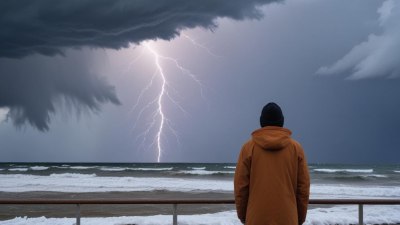Why You Sometimes See Mist Rising from the Ground After Rain
Understand the science behind mist formation after rain and its effects on the environment.

After a rain shower, you may have noticed a curious phenomenon where mist appears to rise from the ground, creating an ethereal landscape and adding a layer of mystique to the environment. This occurrence, often seen in the early morning or late evening, can be attributed to a variety of meteorological conditions. In this article, we will explore the reasons behind mist formation, its relationship with temperature and humidity, and the overall impact on the ecosystem.
Mist, at its core, is essentially tiny water droplets suspended in the air. This process typically occurs when warm, moist air rises and cools down, leading to condensation. After a rain event, the ground is often saturated with water, which not only raises local humidity levels but also warms the air directly above it. In particular, this process is observed more prominently in certain conditions and regions.
Understanding Mist Formation
Mist differs from fog primarily in terms of density and visibility, with fog being thicker and affecting visibility more significantly. The relative humidity must be above 75% for mist to form, allowing small droplets of water to coalesce in the air. This is often the case after a rain event, especially if the rain has been particularly heavy. As the sun sets or rises, temperatures cool, and moisture that has evaporated during warmer periods begins to condense again, forming the mist typically observed near water bodies, wetlands, or fields.
There are several types of mist, with one of the most common varieties being known as radiation mist. This phenomenon occurs in clear conditions, especially on calm nights where the heat from the Earth's surface is lost through radiation. As the temperature drops, this results in a rapid cooling of the air close to the ground, leading to condensation and the formation of mist. The presence of vegetation can also amplify this process, as plant transpiration contributes additional moisture to the atmosphere.
The Role of Temperature
Temperature plays a crucial role in determining when and how mist forms. Following rain, the ground can remain warmer than the air above it, creating upward convection currents that can facilitate mist development. As the moisture-laden air cools when it comes into contact with cooler surfaces or as the overall ambient temperature drops, it can lead to condensation and the visible mist rising from the ground. The intensity of this phenomenon can vary greatly depending on the weather patterns and time of year, with mist being more likely during transitional seasons, such as spring and autumn, when temperature fluctuations are more pronounced.
Humidity and Its Impact
Humidity is also a significant factor in mist formation. High levels of humidity following rain increase the likelihood of mist, as saturated air allows for more water vapor to condense into visible droplets. This association between humidity and mist is particularly strong in areas where evaporation from wet surfaces contributes additional water vapor to the air. Urban environments can exacerbate the phenomenon, as buildings and asphalt roads retain heat and moisture, creating a microclimate where mist can readily form.
Seasonal Variability
The occurrence of mist is not just a random event; it exhibits clear seasonal patterns. During spring and autumn, the temperature differences between day and night are often sharper, creating perfect conditions for the formation of mist. In summer, higher temperatures and lower humidity can reduce the likelihood, while winter, particularly in colder regions, may see less mist due to freezing temperatures that inhibit condensation. However, when conditions align, such as during a warm spell following winter precipitation, mist can surprise and delight observers.
Effects on Local Ecosystems
The appearance of mist is not merely a visual phenomenon; it possesses substantial ecological significance. Mist can provide moisture to local flora and fauna, particularly in areas with limited rainfall. The water droplets suspended in the air can be absorbed by plants, especially epiphytes, which thrive in such humid environments. Moreover, mist can moderate temperatures in local ecosystems, providing a buffer against extreme weather conditions. Some studies suggest that ecosystems populated by mist-loving species, such as cloud forests, are critical to global biodiversity, serving as habitats for many species.
Additionally, mist can influence local weather patterns, as the tiny droplets can interact with cooler upper-level air, leading to the development of clouds and potentially influencing precipitation patterns in the area. This cyclical relationship between mist and weather underscores its role in maintaining ecological balance.
The mystique of mist rising from the ground after rain can be attributed to a delicate interplay of temperature, humidity, and environmental conditions. It serves as both a visual delight and a reminder of the intricate processes that govern our atmosphere. Recognizing the importance of this phenomenon can deepen our appreciation for the natural world and highlight the delicate balance of ecosystems. In essence, next time you witness mist emanating from the earth post-rain, consider the science behind it and the myriad of factors at play. Nature’s complexities remind us how interconnected everything is, encouraging us to explore, understand, and protect our environment.











